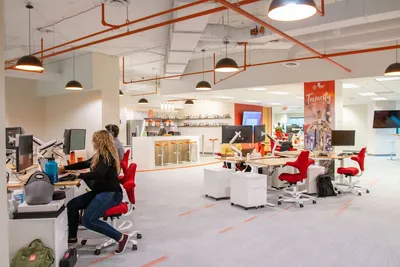
Understanding the Connection Between Office Design and Wellness
In the modern world of work, designing an office that supports employee wellness is no longer a luxury—it's a necessity. The physical environment significantly affects employee health, well-being, and productivity, making it crucial for businesses to consider wellness in their design plans. A well-designed office can reduce stress, enhance mood, and boost overall employee satisfaction.
Ergonomics: Physical Health and Comfort
Ergonomics play an essential role in promoting physical health within the office. By investing in ergonomically designed furniture, such as adjustable chairs and desks, you can minimize the risk of musculoskeletal disorders. Encourage regular breaks and the use of standing desks to foster movement throughout the workday.
Improving Air Quality for Health
Air quality is an often overlooked aspect of office design but plays a significant role in health and productivity. Incorporating air-purifying indoor plants, as well as efficient HVAC systems, can greatly improve air quality. Aim for a design that facilitates natural ventilation, where possible, to enhance the flow of fresh air.
Lighting and Well-Being
Natural light is a powerful influencer of mood and productivity, making it a crucial component of office wellness design. Aim to maximize natural light exposure by opting for open floor plans and large windows. In areas where natural light is limited, full-spectrum bulbs that mimic daylight can help maintain circadian rhythms.
Creating Tranquil Spaces for Mental Health
For mental well-being, it's important to have spaces within an office that offer a reprieve from the busyness of work life. Design quiet corners or relaxation spaces where employees can take a break, meditate, or simply unwind to recharge their mental batteries. These areas can incorporate calming decor, comfortable seating, and soothing colors.
The Role of Collaborative Spaces in Building Relationships
In addition to spaces for individual wellness, fostering a collaborative work environment is integral to overall wellness. Open and flexible spaces that encourage interaction and creativity can enhance teamwork and social connections. These interactions can lead to improved employee morale and a positive work atmosphere.
Tools and Technology for Monitoring Wellness
Integrating technology into your office design can further promote wellness. Tools like air quality sensors, smart lighting, and temperature control systems help create an optimal environment tailored to employee needs. Additionally, wellness apps focused on promoting movement, healthy habits, and mindfulness can be implemented to support a holistic approach to employee well-being.
Concluding Thoughts
Designing for wellness involves a holistic approach, encompassing physical, mental, and emotional health. By thoughtfully considering elements like ergonomics, air quality, lighting, and communal spaces, you can create an office that not only supports wellness but also enhances productivity and employee satisfaction.



